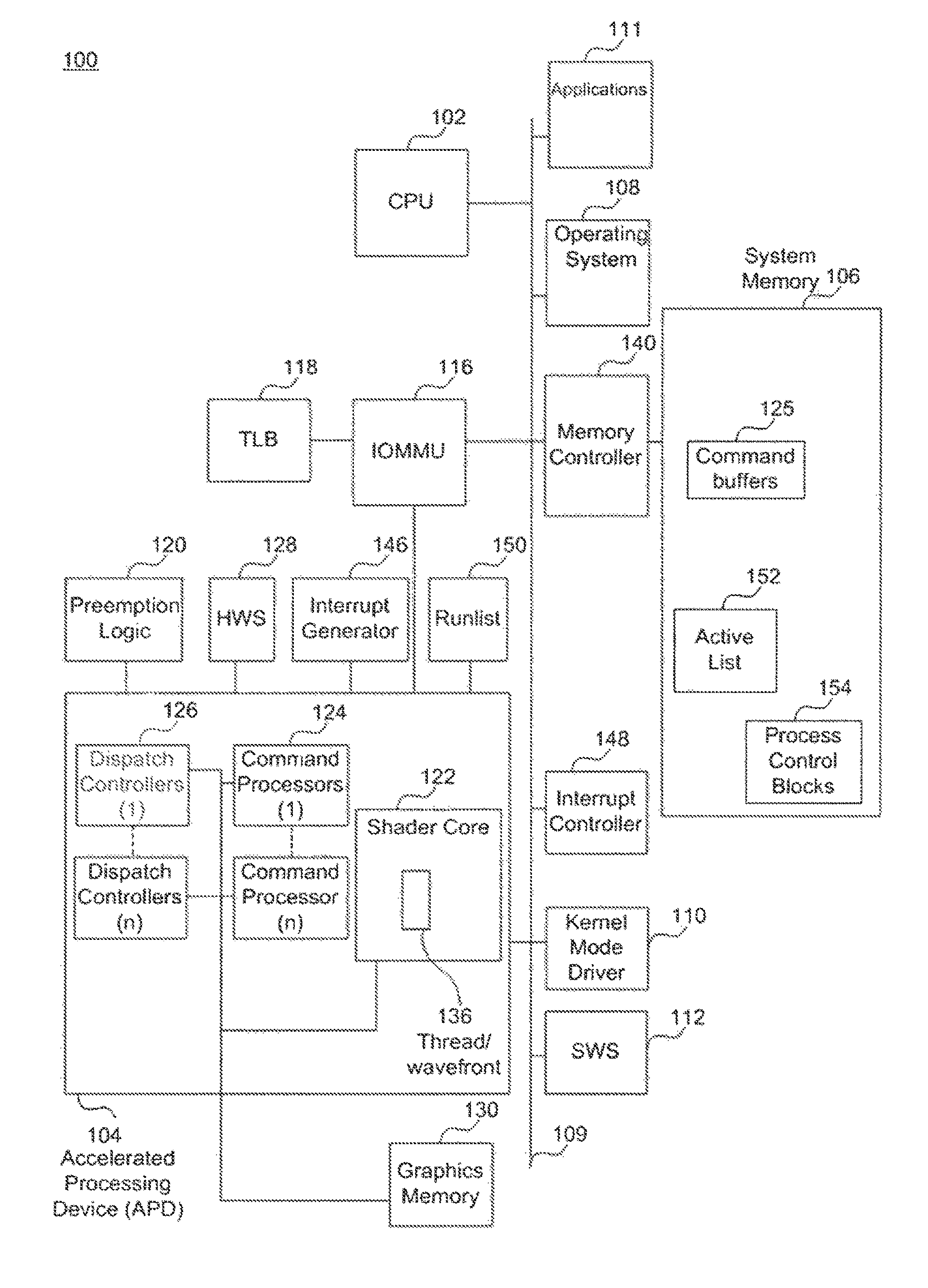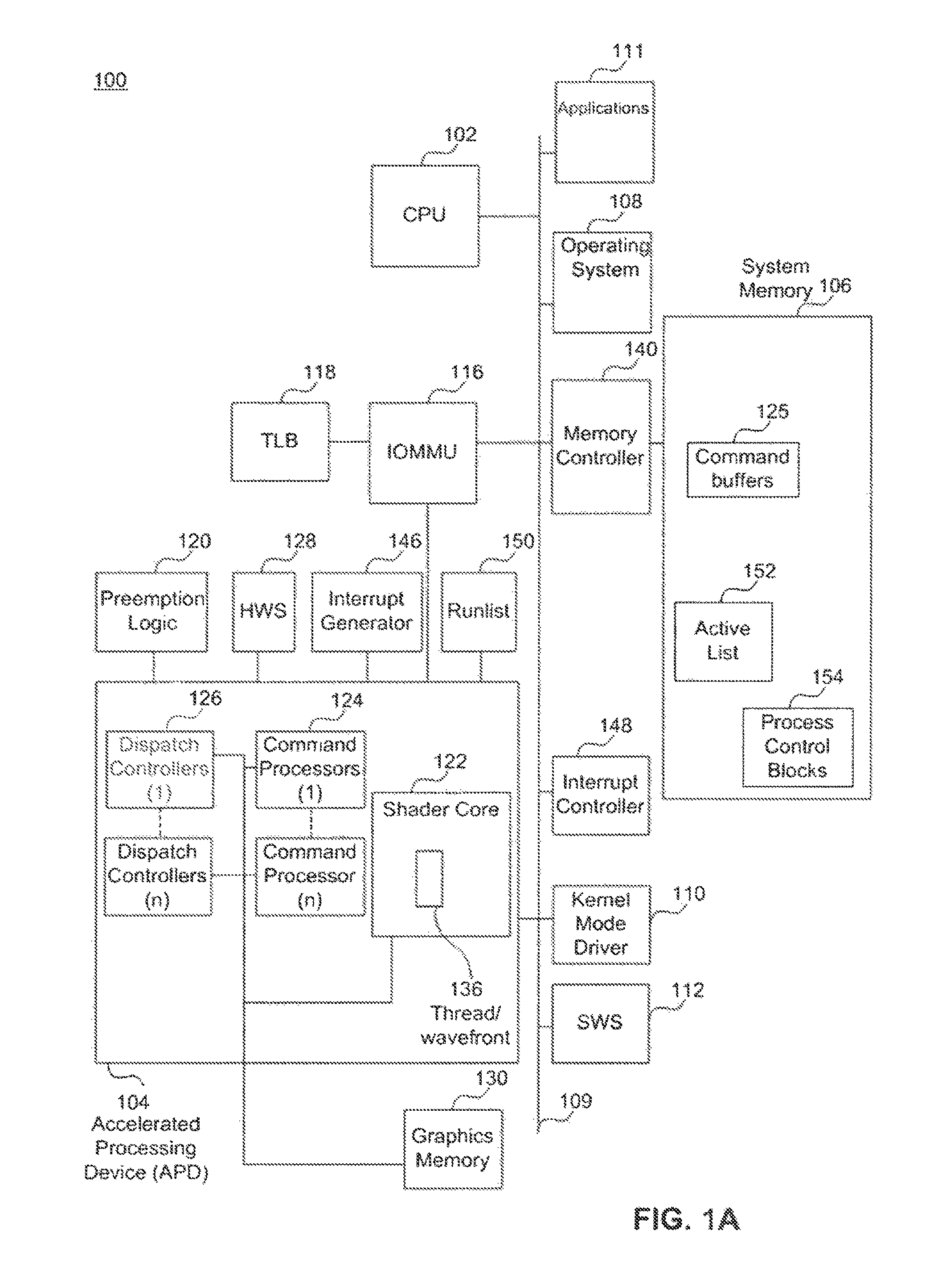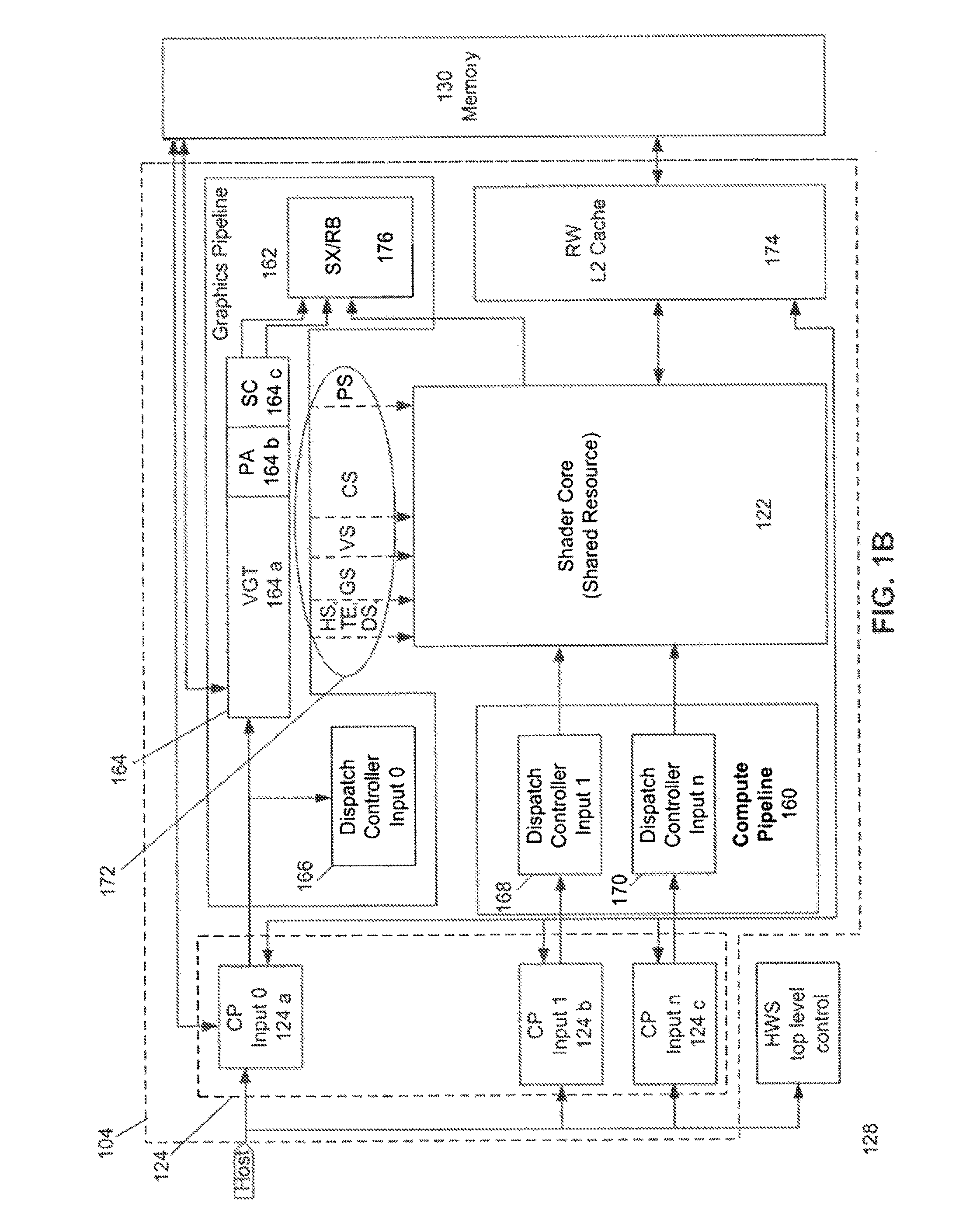Method for urgency-based preemption of a process
a technology of urgency and process, applied in the field of context switching, can solve the problems of poor application value of gpus, and limited use of gpus,
- Summary
- Abstract
- Description
- Claims
- Application Information
AI Technical Summary
Benefits of technology
Problems solved by technology
Method used
Image
Examples
Embodiment Construction
[0011]What is needed, therefore, are methods and systems for efficiently preempting processes running in systems where the accelerated processor (e.g., a GPU) is managed as a resource by system software.
[0012]Although GPUs, accelerated processing units (APUs), and general purpose use of the graphics processing unit (GPGPU) are commonly used terms in this field, the expression “accelerated processing device (APD)” is considered to be a broader expression. For example, APD refers to any cooperating collection of hardware and / or software that performs those functions and computations associated with accelerating graphics processing tasks, data parallel tasks, or nested data parallel tasks in an accelerated manner with respect to resources such as conventional CPUs, conventional GPUs, and / or combinations thereof.
[0013]Embodiments of the present invention provide mechanisms whereby the system software can pre-empt a process executing on the APD for any reason. The APD provides an interfa...
PUM
 Login to View More
Login to View More Abstract
Description
Claims
Application Information
 Login to View More
Login to View More - R&D
- Intellectual Property
- Life Sciences
- Materials
- Tech Scout
- Unparalleled Data Quality
- Higher Quality Content
- 60% Fewer Hallucinations
Browse by: Latest US Patents, China's latest patents, Technical Efficacy Thesaurus, Application Domain, Technology Topic, Popular Technical Reports.
© 2025 PatSnap. All rights reserved.Legal|Privacy policy|Modern Slavery Act Transparency Statement|Sitemap|About US| Contact US: help@patsnap.com



